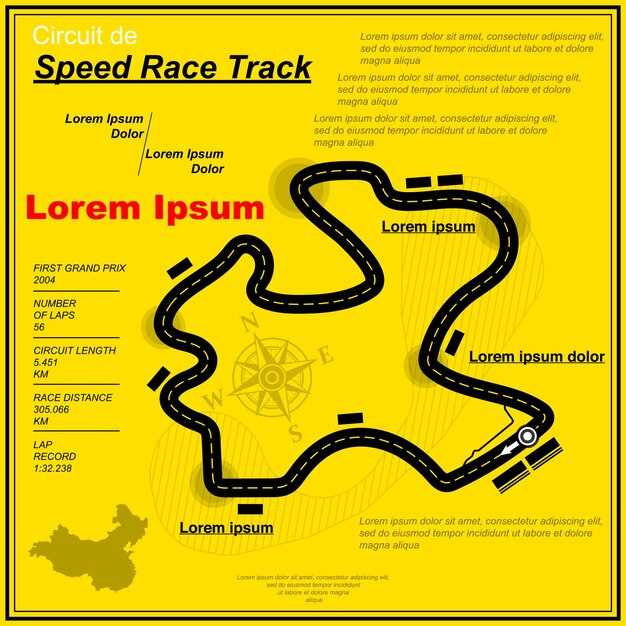
Welcome to the Snetterton Track Guide, specifically designed for beginner drivers and racers looking to enhance their skills on this iconic circuit. Known for its challenging layout and diverse set of corners, Snetterton offers a unique environment where new drivers can learn the intricacies of racing while enjoying the thrill of the competition.
As you embark on your journey, understanding the optimal racing line is crucial. The racing line not only dictates the fastest way around the track but also maximizes your car’s performance by allowing you to maintain speed through curves. In this guide, we will break down key sections of the track and provide tips on finding the perfect line to improve your lap times.
In addition to mastering the line, familiarizing yourself with the different corners and elevation changes will significantly affect your performance. Each turn at Snetterton presents its own challenges, and knowing when to accelerate or brake can be the deciding factor between a clean lap and a missed opportunity. Get ready to delve into the techniques that will help you navigate Snetterton like a pro.
Understanding the Optimal Racing Line at Snetterton

Mastering the racing line at Snetterton is essential for beginners aiming to enhance their driving performance. The optimal racing line refers to the path taken around the track that allows for the highest speed while minimizing both distance and time.
At Snetterton, a 300 layout offers several critical corners where understanding the racing line can significantly affect lap times. Drivers should aim to approach each turn from the outside, cutting towards the apex, and exit back towards the outside. This technique maximizes acceleration out of corners and maintains momentum.
Pay close attention to the Richey and Agostini bends, which require precise navigation of the racing line. Entering these corners too wide or too narrow can lead to lost speed or even mishaps.
Additionally, consider straight segments where the racing line facilitates the best braking points. Snetterton’s long straights such as the Bentley Straight allow for significant speed, and detecting the right point to transition from acceleration to braking is key.
Ultimately, the racing line at Snetterton is characterized by smooth transitions and fluid movements. Through practice and analysis, drivers can discover their perfect line, which will lead to improved performance on this challenging track.
Key Techniques for Cornering and Braking at Snetterton
Mastering cornering and braking techniques at Snetterton is essential for both beginner drivers and racers. The track’s unique layout demands precision and skill, allowing you to harness your car’s potential while maintaining control. Here are some key strategies to enhance your performance:
-
Understanding the Racing Line:
Identifying the optimal racing line is crucial. The racing line is the shortest path around the track and typically allows for the best speed. Pay attention to the following:
- Enter the corner from the outside, clipping the apex, and exit wide.
- Look for visual markers on the track to help position your car correctly.
- Practice different lines during your laps to find what works best for your setup.
-
Braking Technique:
Effective braking can significantly improve your lap times. Implement these techniques:
- Brake on a straight line before entering a corner to maintain stability.
- Use progressive braking; apply pressure gradually to avoid locking the wheels.
- Downshift appropriately to enhance control and responsiveness as you approach the apex.
-
Cornering Approach:
Each corner at Snetterton requires a specific approach. Consider these tips:
- Maintain a steady throttle during cornering to avoid unsettling the car.
- Steer smoothly and progressively; sudden inputs can lead to loss of grip.
- Focus on your exit speed; this will set you up for the next straight.
By focusing on the racing line and applying effective braking and cornering techniques, you will improve your overall performance at Snetterton. Consistent practice and refinement of these skills will lead to faster lap times and greater confidence on the track.
Common Pitfalls to Avoid for Novice Racers at Snetterton

Racing at Snetterton can be exhilarating, but novice racers often fall into common traps that hinder their performance and safety. Understanding these pitfalls is crucial for a successful experience on the track.
1. Ignoring Track Layout: Snetterton features a variety of corners and straights that require precise driving techniques. Novice racers often fail to study the track layout beforehand. Familiarizing oneself with the circuit can significantly improve lap times and overall confidence.
2. Overdriving the Car: New racers may push their vehicles beyond reasonable limits, especially in fast corners. This can lead to loss of control. It’s essential to understand the car’s capabilities and to find a balance between speed and stability.
3. Poor Line Selection: Taking the incorrect racing line can disrupt momentum and cause time loss. Novices should focus on hitting apexes and maximizing exit speed, particularly on the main straights where speed is crucial.
4. Inadequate Braking Techniques: Many beginners fail to practice effective braking methods. Late braking can lead to overshooting corners and compromised handling. It’s advisable to practice consistent and controlled braking to ensure better vehicle dynamics.
5. Neglecting Tire Management: Tire performance is vital during races. Novice racers often overlook tire pressures and temperatures. Properly managing tire conditions can enhance grip and reduce wear, which is particularly important over longer sessions.
6. Overlooked Safety Protocols: Safety should always come first. Beginners might neglect proper racing gear or the safety features of their vehicles. Following all safety regulations and protocols at Snetterton can prevent accidents and injuries.
7. Misjudging Other Drivers: Novice racers often misjudge the behavior of more experienced drivers. It’s crucial to maintain awareness and anticipate the actions of others on the track. Racing defensively can help avoid unnecessary incidents.
By being aware of these common pitfalls, novice racers at Snetterton can enhance their racing skills, enjoy their time on the track, and ensure a safer environment for themselves and others.



